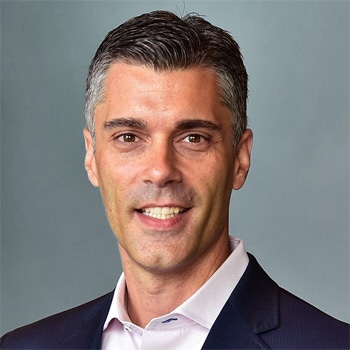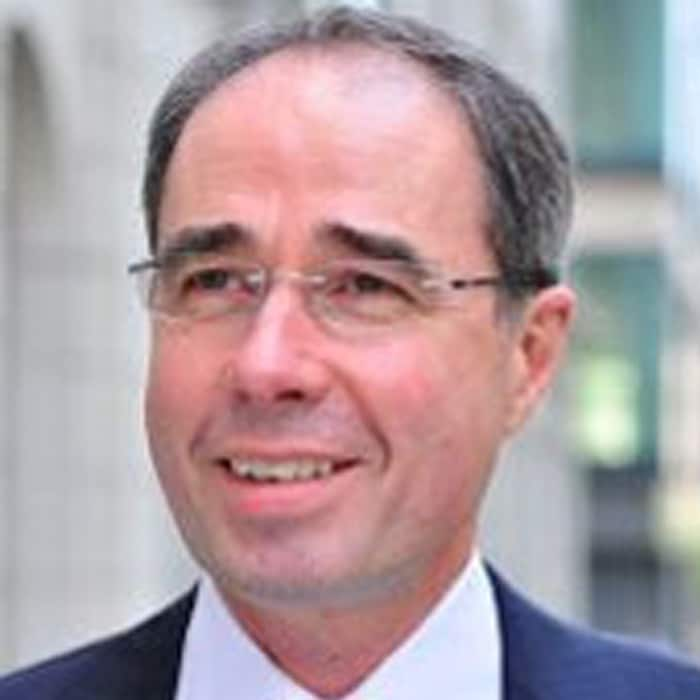Reinventing HR has been saved

Reinventing HR An extreme makeover
28 February 2015
 Arthur H. Mazor United States
Arthur H. Mazor United States Michael Stephan United States
Michael Stephan United States Brett Walsh United Kingdom
Brett Walsh United Kingdom- Hendrik Schmahl, Jaime Valenzuela
Several factors are converging that should make reinventing HR a critical priority for companies around the world.
- HR needs an extreme makeover driven by the need to deliver greater business impact and drive HR and business innovation.
- While CEOs and top business leaders rate talent as a key priority, only 5 percent of survey respondents rate their organization’s HR performance as excellent. This year, HR’s self-assessment showed virtually no improvement over last year’s.
- Companies are now moving beyond talk to action, revisiting the required capabilities of the HR function, building HR universities, and modernizing relationships with internal business partners.
View the complete Global Human Capital Trends 2015 series
Explore
Explore the interactive trends dashboard
Learn more about reinventing HR
Create and download a custom PDF of the Human Capital Trends 2015 report.
HR is at a crossroads. Once designed primarily as a compliance function, today’s HR organization must be agile, business-integrated, data-driven, and deeply skilled in attracting, retaining, and developing talent.
 These business imperatives demand not only a new organizational model for HR itself, but also a massive reskilling of HR professionals around the world. They also create an unprecedented opportunity for HR to play a preeminent role at the highest levels of business strategy.
These business imperatives demand not only a new organizational model for HR itself, but also a massive reskilling of HR professionals around the world. They also create an unprecedented opportunity for HR to play a preeminent role at the highest levels of business strategy.
Faced with these new pressures and opportunities, how do our respondents rate HR’s performance? Unfortunately, not very highly—and not significantly better than in past years, as evidenced by HR’s stagnating “grade point average” (figure 1).1

The question is, do HR organizations have the right capabilities to meet business needs? Recent research shows that only 30 percent of business leaders believe that HR has a reputation for sound business decisions; only 28 percent feel that HR is highly efficient; only 22 percent believe that HR is adapting to the changing needs of their workforce; and only 20 percent feel that HR can adequately plan for the company’s future talent needs.2 Meanwhile, our survey shows that just 11 percent of respondents feel that their organizations provide “excellent” development for HR (figure 2).

To put it bluntly, HR is not keeping up with the pace of change in business. Today, there is a yawning gap between what business leaders want and the capabilities of HR to deliver, as suggested by the capability gap our survey found across regions and in different countries (figure 3).
A makeover is necessary
Several factors are converging that should make reinventing HR a critical priority for companies around the world.
- CEOs and other senior executives are more worried about talent than ever before. Eighty-seven percent of our respondents are deeply concerned about culture and employee engagement, 86 percent about their leadership pipeline, and 80 percent about workforce capabilities.3 At the same time, 80 percent of survey respondents believe their company’s HR skills—or lack of skills—are a significant issue.4
- Many organizations are moving to a global business services model, and back-office functions and systems are transitioning to cloud technology. HR is often at the forefront of this transition. As a result, the HR function has an opportunity to play a leading role in defining the scope of retained functional roles such as business partners and centers of excellence.
- The newer HR technology platforms now offer integrated systems and more access to data, including analytics and assessment science. Employee self-service is now a reality, all but eliminating the need for HR generalists. Yet HR continues to struggle to optimize analytics.
- A highly competitive global talent market has shifted power into the hands of employees, forcing HR to redesign programs in the face of a much more demanding workforce.
- Traditional HR practices such as performance management and leadership and development are undergoing radical change, forcing HR to throw away the old playbook and deliver more innovative solutions.
Research shows that nearly 40 percent of new CHROs now come from the business, not from HR.
Several key changes are now underway that we believe will continue to gain momentum in 2015. First, HR is being forced to redefine its role from “service provider” to an enabler and builder of talent. HR’s traditional employee service mission is now handled through operational services groups, modern human capital management technologies, and easy-to-access online and mobile applications. The rapid evolution of cloud technology is encompassing even more HR activities than traditional models, leaving HR to spend the majority of its time on advising and consulting executives on people-related strategies. In this new world, HR operational effectiveness and efficiency are table stakes.
Second, HR is shifting from a group of generalists to a team of highly skilled business consultants. Leading organizations have many more HR specialists who operate at the local business-unit level to help deliver better results, including faster time to market and greater customer satisfaction and operational efficiency. These specialists work with each other through communities of expertise, using centralized systems, processes, and shared frameworks that remain agile enough to act locally to help leaders solve problems.
Finally, professional development and research have emerged as key HR capabilities. Companies with strong development programs and focused strategies to incorporate external data far outperform their peers.
An example of a new approach to reskilling HR leaders is demonstrated by the HR leadership master class piloted by the India-based organization Aditya Birla Group (ABG). ABG is one of the world’s leading global conglomerates, operating in 36 countries with more than 120,000 employees. To support and drive the group’s global expansion and growth plans (more than half of the group’s revenues today come from outside of India), a key component of its HR transformation program is to increase the skills of the company’s HR leadership team, including the chief people officers in each of ABG’s group companies and ABG’s global centers of expertise. ABG planned and conducted a two-day “master class” for its senior HR leaders to kick off the shift in HR leadership capabilities. The master class, developed and delivered in partnership with external experts, focused on business, technology, and HR trends, emphasizing areas such as performance (productivity and innovation), leadership and talent, and teaming. It also sought to uncover information on how HR leaders were dividing their time between strategic and operating priorities. A critical part of the master class was a deep dive on business and economic value—a unit aimed at helping HR leaders better understand and speak the language of business, economic value, and HR program design. The program ended with each executive and each team mapping out his or her own capability development plan, which could include areas such as analytics, business acumen, coaching, facilitation, change management, social media, and HR technology.
Some organizations are recognizing that the development of HR business partners can include a common curriculum across functions. For instance, one major global oil and gas company developed a common behavioral framework and consistently deployed it across all of its 12 global functions. In its four larger functions (IT, finance, HR, and legal), the framework was complemented by face-to-face programs (for senior colleagues) and virtual programs (for junior business partners) designed to enhance participants’ skills. Each program was sponsored at the C-suite level, and included a series of “strategic challenges” focusing on real-time business issues the function faced. The concept of “leaders leading leaders” was central to the program: Executive vice president-level leaders delivered part of the more senior program, and the senior group, in turn, was involved in delivering the program to the junior cohorts.
It all starts with the senior HR leader
In this era of rapid business change, the role of the CHRO becomes radically different and more demanding than ever. Today’s CHRO must be innovative and business-savvy and be able to stand toe to toe with the CEO. At the same time, a CHRO must know how to bring the HR team together and help it evolve into a more distributed, business-integrated function. CHROs must also be comfortable adopting and embracing technology and analytics, which are integral to HR’s future success.
One sign that many organizations are expecting something fundamentally different from HR is that they are bringing in a fundamentally different kind of executive as CHRO. Research shows that nearly 40 percent of new CHROs now come from the business, not from HR. At Liberty Mutual, for instance, the chief talent and enterprise services officer, Melanie Foley, previously served as executive vice president of distribution at Liberty Personal Markets.
Lessons from the front lines
Like many other global companies, Halliburton was struggling to adjust to a 21st-century talent environment that demanded new approaches to learning and development, a clear understanding of how to use data to drive decisions, and a better grasp of strategic business priorities. Unlike at many organizations, however, Halliburton’s HR team recognized these challenges as an opportunity to transform HR from a transactional organization into a business-aligned trusted advisor and solutions provider.
The process involved a number of steps. The company started by launching a survey of business leaders to understand exactly what they needed from HR. The findings from this research provided the foundation for a new vision of Halliburton’s HR organization built around a strong business case for HR.
With its transformation, the HR function is seeking to shift from the HR generalist model to an HR business partner role. Instead of simply managing transactions, implementing policies, and developing programs, the new HR organization aims to focus on understanding the needs of the business and delivering value-added solutions.
Instead of simply managing transactions, implementing policies, and developing programs, the new HR organization aims to focus on understanding the needs of the business and delivering value-added solutions.
The Halliburton HR team recognized that business-facing HR professionals could not operate as strategic business advisors and partners without standardizing, automating, and reorganizing how repeatable, operational work was done. This was necessary to build credibility for the new operating model and for the new kind of relationship that HR was seeking to establish with the business. The HR team established a global HR operations organization with four regional hubs to absorb much of the transactional work, and introduced new online technology to support managers in requesting services from this group. At the same time, the team engaged the larger human resources community as change agents to educate managers and to drive the transition to a new operating model.
To implement this new vision, Halliburton researched best practices and engaged HR leaders in a series of workshops designed to clearly define the new skills and competencies required for HR. As the transformation evolved, the HR organization developed a maturity map to track progress and worked with company leaders to determine the most effective way for HR business partners to impact business priorities.
Of course, a transformation of this magnitude could not occur without a significant investment in people. As part of this investment, Halliburton created an internal “College of HR” that offered a blended learning curriculum to address HR learning needs, including workshops on consulting skills and interactive webinars on the new HR service delivery model. The college offered blended learning activities in four areas: foundational HR, business acumen, consulting, and organizational capability. Innovative branding efforts, including the development of the avatars “Hal E. Burton” and “Hallie Burton,” have assisted with the transformation, helping to direct program participants to the right places in their learning curriculum.
The transformed HR organization features two primary types of HR employees. Operations partners work with line managers and employees to support implementation at the local level. Business partners work with more senior business leaders to ensure that the business’s needs are met. Each type of partner is expected to use industry knowledge, understand the human implications of business problems, and align HR’s metrics to business results. Partners identify real business needs and then incorporate metrics into decision making. They also work as consultants to the business, building partnerships and trust, applying active listening and questioning techniques, and utilizing coaching skills. In addition, they strive to build organizational capability in areas such as leadership development, succession planning, organization development, team effectiveness, workforce planning, and talent analytics.
Paramount to this effort’s success has been the active sponsorship and commitment of Halliburton’s HR leadership team. The company’s HR executives have been personally involved in a number of College of HR programs, participating in session design and delivery and driving accountability and active participation within their teams.
Where companies can start
- Design the HR organization to deliver solutions: For many businesses, it is time to redesign HR with a focus on consulting and service delivery, not just efficiency of administration. HR business partners must become trusted business advisors with the requisite skills to analyze, consult, and resolve critical business issues.
- Create business-integrated “networks of excellence.” Rather than locating HR specialists in central teams, embed them into the business—but coordinate them by building a strong network of expertise. Recruitment, development, employee relations, and coaching are all strategic programs that should be centrally coordinated but locally implemented. When specialists in these areas live and work close to the business, their impact is greatly enhanced.
- Make HR a talent and leadership magnet: How do people get HR jobs in your company? If they accidentally move into HR, this may be holding you back. Create rigorous assessments for top HR staff and rotate high performers from the business into HR to create a magnet for strong leaders.
- Invest in HR development and skills as if the business depended on it: HR professionals at all levels need continuous professional development. Create your own “HR university” and invest in professional development to make sure your HR team is constantly sharpening its own saw and developing the necessary skills to survive. Focus on capabilities such as business acumen, consulting and project management skills, organizational design and change, and HR analytical skills.
Bottom line
HR needs to raise its game by aligning its skills and capabilities with the organization’s overall business goals. As HR pursues its own makeover, its strategic role must also change to meet the intense pressures of today’s business environment.
Imagine an organization where business leaders look to HR for advice as they develop business strategies to drive growth, where HR is considered the developer of talent and leadership across the business, and where business leaders respect and admire the HR professionals as co-leaders of the business. This can all happen, but only with an extreme makeover of HR.
© 2021. See Terms of Use for more information.




